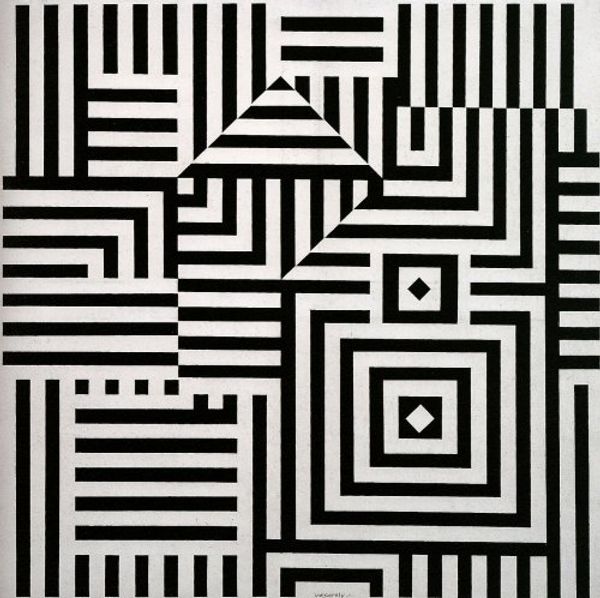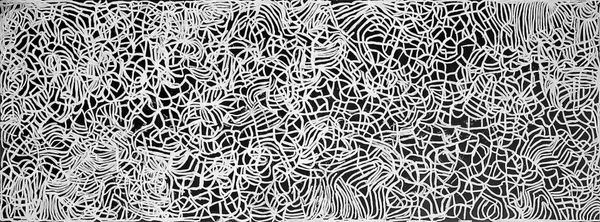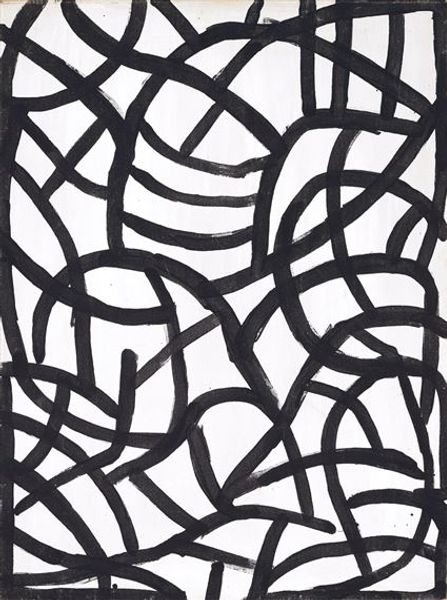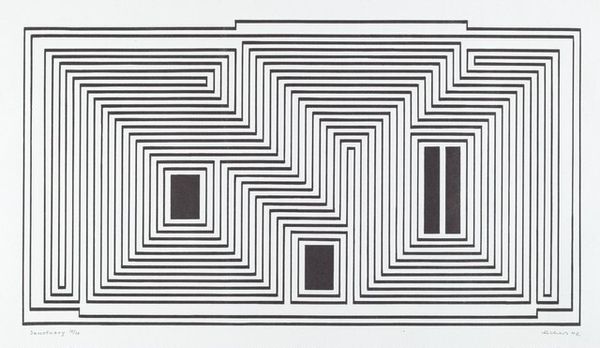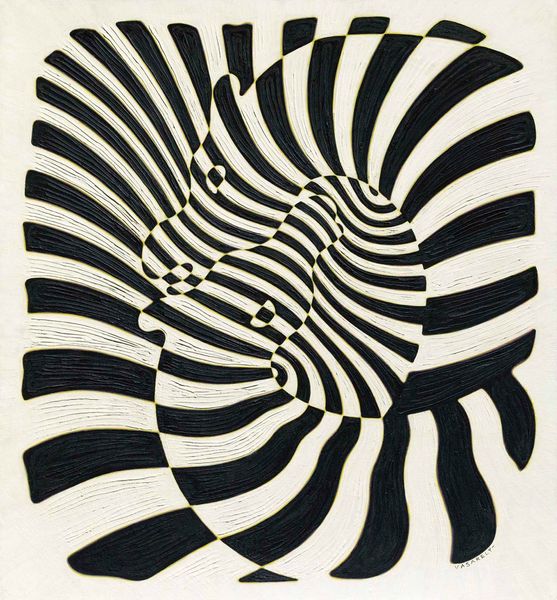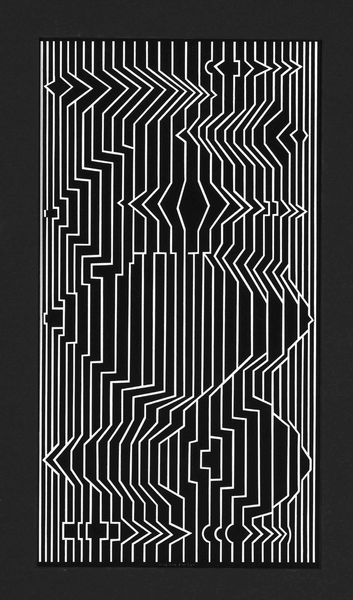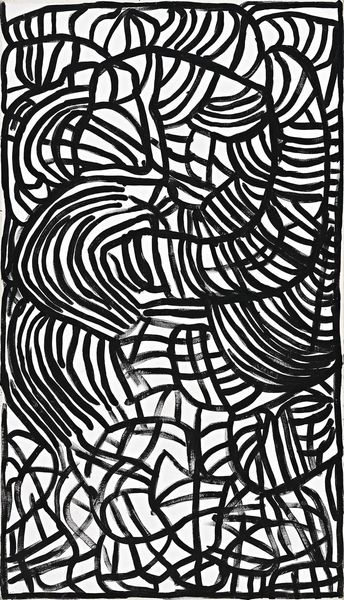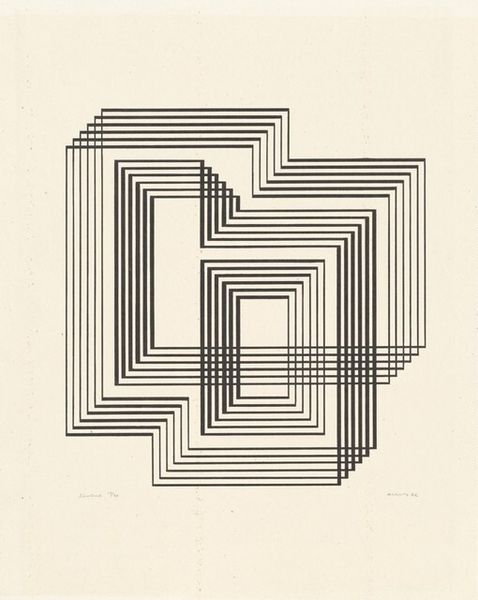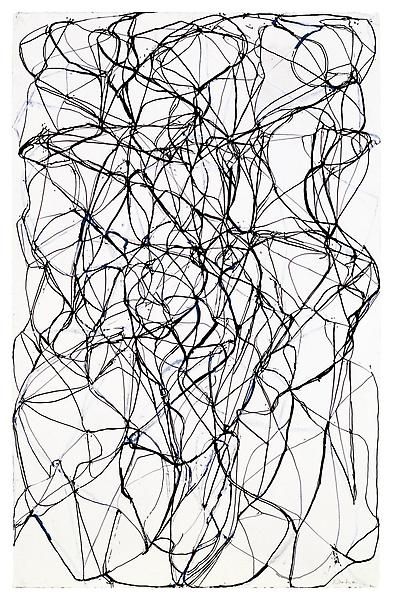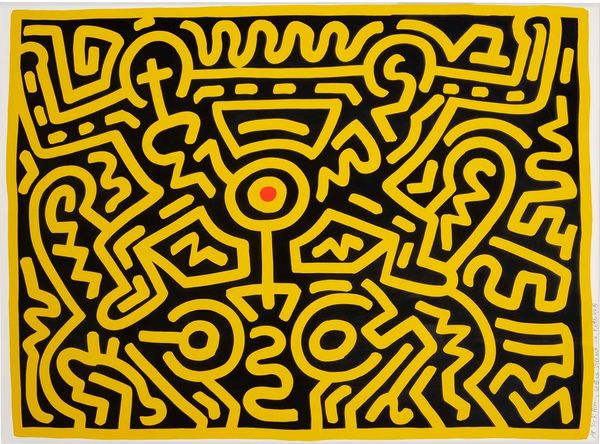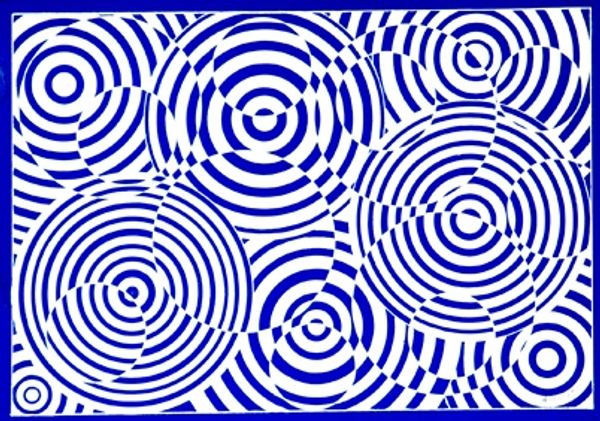
#
neo-pop
Copyright: Modern Artists: Artvee
Curator: Keith Haring created "The Labyrinth" lithograph in 1989, presenting a fascinating interplay of lines and forms. Editor: My first thought is disorientation, almost claustrophobia, despite the work being quite open. The stark black and white creates a strong, almost dizzying, effect. Curator: Lithography as a printmaking process allowed Haring to reproduce his characteristic line work with great precision and disseminate it widely, aligning with his belief in art’s accessibility. We see here his reliance on industrial techniques that can democratize creative expression. Editor: Exactly, the piece really pulls you into the historical context of late 20th century anxiety—think about the AIDS crisis and Haring's own struggles. There is a feeling of searching, of being trapped by unseen forces, which definitely spoke to that generation's experiences. The work creates meaning as a sociopolitical commentary on what it meant to survive then. Curator: I'm interested in the relationship between his background and his creative expression, considering how Haring honed his craft by engaging with graffiti culture and then by becoming a presence in the New York art scene. Editor: And note how his style itself became incredibly commodified. How many things could you buy at the time branded with his distinct motifs? This forces us to examine how his art—originally accessible street art—transformed into highly valuable collector's items. This presents us with serious intersectional questions about power, commercialism, art, identity, and ownership. Curator: It shows a great awareness of what making, distributing, and valuing artwork entails and also points to the tension of creation in his sociopolitical climate. It brings up a fascinating material critique of what we define as "high art." Editor: Absolutely. "The Labyrinth" speaks to both individual and collective narratives. It invites contemplation of not only Haring's vision but also the period that forged it. Curator: For me, the print highlights his work ethic and vision as someone using popular culture as a medium to reach a broader audience. Editor: For me, it's a powerful meditation on survival, resistance, and the complicated relationship between art and social change.
Comments
No comments
Be the first to comment and join the conversation on the ultimate creative platform.
